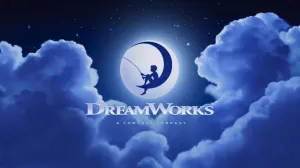The Toys That Made Us returned for its second season on Netflix this weekend. Each episode of the documentary series recounts the history of a different iconic toy line. The previous season covered the likes of Star Wars, He-Man, and GI Joe. The new season covers Transformers, LEGO, and yes, Star Trek. Unfortunately, the tale of Star Trek toys is a bittersweet one, with the shadow of a certain other sci-fi franchise hanging overhead.
Videos by ComicBook.com
As told in the episode, the early days of Star Trek toys were exciting and fraught. There wasn’t much precedent for how to license a science fiction television show, so Paramount didn’t exercise much caution with who they handed the rights to. The result was a lot of cheaply made toys that didn’t have much to do with the series, label-swapping, and inaccurate recreation. There were a least a few exceptions though, like AMT’s original USS Enterprise model kit.
Star Trek’s First Frontier
The wild west of Star Trek toys was tamed when Mego Toys acquired the license. Mego had made a name for itself bringing the DC Comics, Marvel, and Planet of the Apes licenses to life, so fans could rest assured that Star Trek was in good hands.
For the most part, this proved to be true. Mego cut its fair share of corners on toys like the totally inaccurate Gorn, but the action figures depicting the core cast of the television series and the playsets that went with them were a step above anything that had been produced previously.
Then came Star Wars. When George Lucas’ surprise hit became a toy sensation, the franchise quickly crowded Mego out of the market. Ironically, it also provided Mego with one last chance to turn things around.
The success of Star Wars led Paramount to greenlight Star Trek: The Motion Picture. Sci-fi movie products were all the rage, so Mego put it all on a line for a series of high-quality Star Trek: The Motion Picture toys. Unfortunately, Star Trek: The Motion Picture flopped on nearly all fronts, bringing Mego and Star Trek toys to an end.
The Next Generation
What followed was a roller coaster of poorly timed attempts to bring Star Trek toys back to life. In retrospect, fans know that the even-numbered Star Trek movies are generally considered the good ones, and the odd-numbered movies to be failures. Marketing for the movies didn’t learn that lesson until it was too late. The failure of The Motion Picture meant there were no toys for the much more successful Wrath of Khan. The success of Wrath of Khan meant toys for The Search for Spock, but that film’s underwhelming performance meant no toys for The Voyage Home, and so on.
Star Trek toys came roaring back to life when Playmates, who was best known for producing Teenage Mutant Ninja Turtles toys, acquired the license around the time that Star Trek: The Next Generation was going to debut. Playmates had huge success with their line of Star Trek toys by appealing to obsessive collectors.
That was also the line’s downfall. The introduction of extremely rare, limited-run figures meant many of those collectors gave up on buying the toys and keeping their collection complete. Playmates alienated the very market it cornered.
Is Star Trek Cool?
In a way, this is a microcosm of how Star Trek and Star Wars have existed alongside each other for years. Star Trek was introduced to children of the 1960s who craved science fiction. Star Wars caught the imagination of a different generation, a generation who craved action and adventure. Star Wars is only superficially science fiction, after all, fitting much more snuggly into the science fantasy space opera genre.
It’s that Star Wars generation and their direct descendants that now dominate the pop culture landscape. Because of this, Star Wars has been able to penetrate the mainstream in a way that Star Trek just hasn’t. Sure, people know what Star Trek is, but it lacks the same mass appeal as Star Wars. There’s something about Star Wars – a cool factor, a sexiness – inherent in its romantic storytelling that appeals to the non-nerd masses in a way that Star Trek hasn’t.
Star Trek has been painted into a corner by how Star Wars has redefined what audiences expected from science fiction. The 2009 Star Trek reboot tried to appeal to the masses by giving the franchise more of that action-adventure flare. It had some success in attracted those mainstream audiences, but core Star Trek fans rejected this approach as betraying the spirit of what Gene Roddenberry had created, putting the franchise in a difficult position.
Compare that to Star Wars, which – Solo movie aside – seems to have succeeded in capturing the imagination of entirely new generation of fans with The Force Awakens while Paramount had to sideline the Star Trek film franchise for a time after Star Trek Beyond failed to bring in much of an audience, either mainstream or core fans. Writer and star Simon Pegg sayshe tried to appeal to old-school fans and places blame for Beyond‘s disappointing box office on poor marketing. He may be right. Paramount didn’t emphasize the 50th anniversary of Star Trek angle in promoting the film, perhaps because they were afraid of alienating the casual audience, but blasting the Beastie Boys in the trailer didn’t seem to draw in the masses either.
The State of Star Trek Toys Today
Taking a look at the toys now, McFarlane Toys and Eaglemoss currently share the license. Eaglemoss focuses pretty exclusively on high-end ship models. McFarlane, meanwhile, is producing the kind of high-end figures that fans expect from the company.
However, if you walk into the toy aisle of any major retailer, there’s a whole section dedicated to Star Wars, sometimes even an endcap or two if there’s a movie release near, with toys appealing to fans of all ages. But Star Trek toys are much rarer. They are, again, aimed at the collector, and depend on the collector to go find them somewhere off the beaten path.
Star Trek is at a turning point. Star Trek: Discovery had a successful first season and was heavily represented at the CBS booth during the recent licensing expo in Las Vegas. Perhaps by taking the prestige television approach, this new Star Trek series can penetrate the mainstream similarly to how Game of Thrones did on HBO, though so far merchandise has been limited outside of the official Star Trek store (Seriously, Funko makes Pop! Vinyl figures for everything and nearly a year later we don’t have a Discovery line).
Paramount is also finally pushing forward with not one but two Star Trek movies in development. Maybe this two-pronged approach can finally help bring Star Trek, the series that practically invented modern fandom, out of the Star Wars‘ shadow in pop culture.








